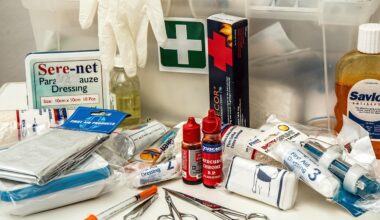How to Prepare Yourself to Meet Cat Adoption Eligibility
Adopting a cat is a rewarding experience that can bring joy and companionship into your life. However, before embarking on this journey, it is essential to understand the eligibility criteria set by shelters and rescue organizations. First, you should evaluate your lifestyle and ensure you have the time, patience, and commitment to care for a cat. Cats require daily feeding, playtime, and grooming to thrive. Additionally, consider your living situation. If you rent, check your lease agreement to ensure that cats are permitted and make necessary arrangements with your landlord. Financial stability is another crucial factor. Owning a cat involves recurring expenses such as food, litter, and veterinary care. It is wise to budget accordingly. Finally, think about your home environment. It should be safe and cat-friendly, meaning you need to eliminate hazards and create a stimulating space for your new furry friend. Take the time to educate yourself about different cat breeds and their specific needs to match the right feline companion to your lifestyle. Research shows that preparation can significantly improve your adoption experience.
Undoubtedly, one of the most important considerations includes understanding your commitment. Ensuring that you’re ready for a pet’s long-term care is vital. A cat can live up to 15 years or more. During this period, your lifestyle may change, so you must ensure you can adapt accordingly. This could mean moving residences, maintaining financial stability, or simply juggling your time between work and home. Cats thrive on routine; thus, being available for regular feeding and exercise is essential. It can also involve planning for vacations or unexpected life events. Consider asking trusted friends or family members to assist with your cat care if necessary. Ensure you have a network to help share responsibilities when needed. Additionally, familiarize yourself with general cat behavior and health. Understanding what is typical for cats helps in identifying any signs of distress or health concerns. If you’ve never owned a cat, reach out to local shelters or pet stores for resources on cat care. It can be incredibly enlightening to discuss with others who share a passion for animal welfare. Planning ahead is not just beneficial; it’s crucial for successful adoption.
Researching Breeds and Personal Preferences
As part of your preparation, dedicate time to learning about various cat breeds. Each breed comes with unique characteristics, temperaments, and requirements. Some cats may be more energetic and playful, while others prefer a laid-back lifestyle. Understanding your preferences can guide you in matching the right cat to your environment. For example, if you have young children, you might want a social and tolerant breed, while someone looking for a quieter companion may prefer a more sedate cat. Additionally, evaluating your potential cat’s grooming needs is essential. Some breeds require regular grooming, while others are low-maintenance. If you have allergies, consider hypoallergenic breeds. Moreover, visit local shelters to meet cats in person, as this allows you to gauge their personalities firsthand. Spend time interacting with different cats to discover what feels right for you. You can also observe how they relate to other animals, which is crucial if you already have pets at home. Ultimately, ensuring that the cat you adopt fits your lifestyle will enrich both your and the cat’s daily experience.
It’s equally important to consider your home setup for the new cat. A welcoming environment is crucial for a cat’s adjustment. Before bringing a kitty home, prepare a designated space that includes all the essentials: food and water dishes, a litter box, and a comfortable resting area. Avoid overwhelming your new pet with too many areas of exploration right away. Cats appreciate safe, quiet spaces to retreat when feeling anxious. Consider adding cat trees or shelves for climbing and scratching posts for play. This will create an engaging environment. If you already have other pets, take precautions to introduce them gradually to minimize stress for all animals involved. Designate specific rooms for introductions and daily interactions, maintaining a safe distance until they become accustomed to each other’s presence. Additionally, assess your household for any potential hazards. Keep toxic plants, chemicals, and small choking hazards out of reach. Childproofing and securing windows are also essential, particularly for curious cats that may explore high places. Proper preparation can lead to a harmonious relationship between your new feline friend and your family, ensuring everyone feels safe and comfortable.
Financial Readiness for Adoption
Being financially prepared to adopt a cat is a significant factor in the process. Monthly expenses can add up quickly, so it’s crucial to have a clear budget in place. Calculate the anticipated costs of food, litter, and routine veterinary checkups. Additionally, set aside an emergency fund to cover unexpected medical bills. Common health issues can arise, and having funds readily accessible can prevent unnecessary stress. It’s also advisable to consider pet insurance, which can help mitigate veterinary costs over time. Research different insurance providers and policies to find one that suits your needs. In addition, estimate costs for essential supplies needed at adoption, including scratching posts, toys, and bedding. Making a checklist of these items beforehand can guide you in staying organized. Furthermore, if you plan to adopt from a rescue organization, they might charge an adoption fee that includes initial vaccinations or spaying/neutering. Prepare by inquiring about these costs ahead of time. Financial readiness is not only about covering everyday expenses but also ensuring you can provide a loving, secure lifetime home for your new cat. Proper budgeting enhances your ability to commit long-term.
Another major aspect of being prepared for cat adoption is understanding your time commitments. A cat isn’t merely a companion; it’s a living being that requires love, companionship, and attention. Your schedule should allow for interaction, as cats thrive on bonding with their humans. Regular play and engagement promote healthy behavior and emotional well-being. Consider your obligations to ensure you can meet your cat’s needs, especially during their critical adjustment period. Cats may take time to acclimate and bond with their new families, so your presence will be beneficial initially. Establishing a routine will help your cat feel secure, making it vital to set aside time daily for feeding, grooming, and play. Engaging in interactive play helps strengthen your bond and can alleviate behavioral issues stemming from boredom. Additionally, consider scheduling regular grooming sessions. Depending on the breed, it may be necessary to brush your cat weekly or even daily to minimize shedding and matting. Ultimately, being mindful of your time commitments is integral to ensuring a positive adoption experience that fosters a strong and lasting relationship with your new pet.
Gathering Necessary Supplies
Before officially adopting, ensure you have all necessary supplies on hand to create a welcoming environment for your new cat. Start by obtaining a high-quality food and water dish. Selecting the right cat food tailored to their age is vital, whether it’s kitten or adult food. Provide fresh water daily to keep them hydrated and healthy. When it comes to litter boxes, invest in a reliable and comfortable option for your cat to use. It may also be beneficial to have multiple litter boxes available if your home has more than one level. Choose a litter that your cat prefers, as this can vary by individual. Additionally, obtain scratching posts or pads to allow your cat to express natural behaviors. They will help keep your furniture safe while also providing enrichment for your new furry friend. Don’t forget to purchase toys, which are essential for mental and physical stimulation. Interactive toys encourage play, keeping them entertained. Lastly, prepare a cozy resting area with a blanket or cat bed that offers a secure retreat. Having these items ready conveys your preparedness and commitment to your cat from the very beginning.
Finally, once you’ve completed your preparations, it’s time to think about where you will adopt from. Various shelters and rescue groups may have different procedures and requirements. Contact multiple organizations to gather information on their adoption process, as this can help you find the right fit. Some places may conduct home visits or ask for references, while others simply require an application to be filled out. Understand what documents may be needed, such as proof of income or identification. Prepare your references in advance, ensuring that they are willing to speak positively about your capability and commitment to pet care. Visiting different shelters also allows you to observe animals in need of homes while seeking professionals who can provide support and guidance. By building bonds with staff members, you’ll learn valuable insights that can help match you with the right cat. Adoption events can be especially helpful, as they provide opportunities to meet multiple cats at once. In summary, choosing the right adoption organization can make your journey smoother, allowing you and your future feline friend to begin your lives together harmoniously.


